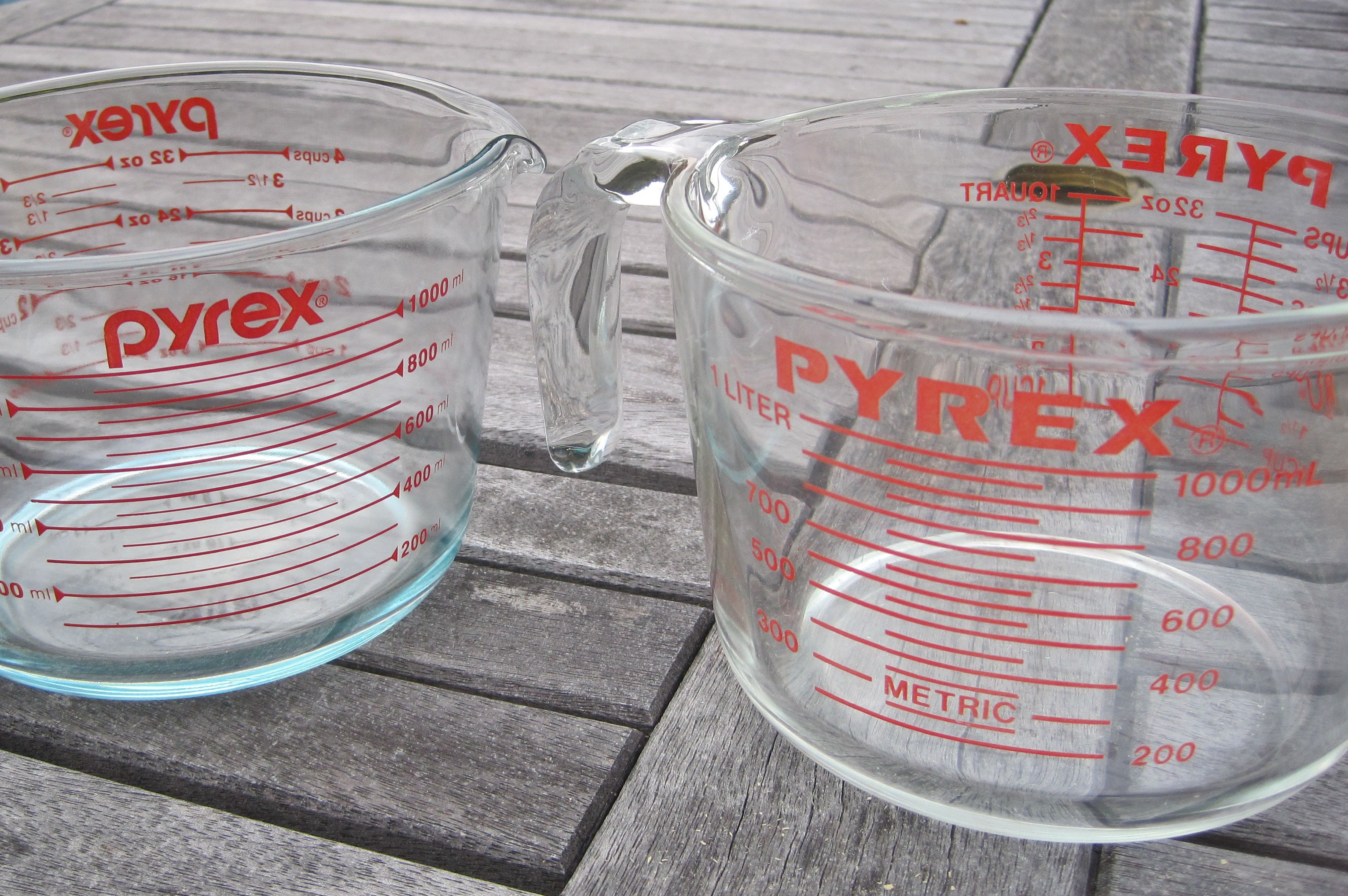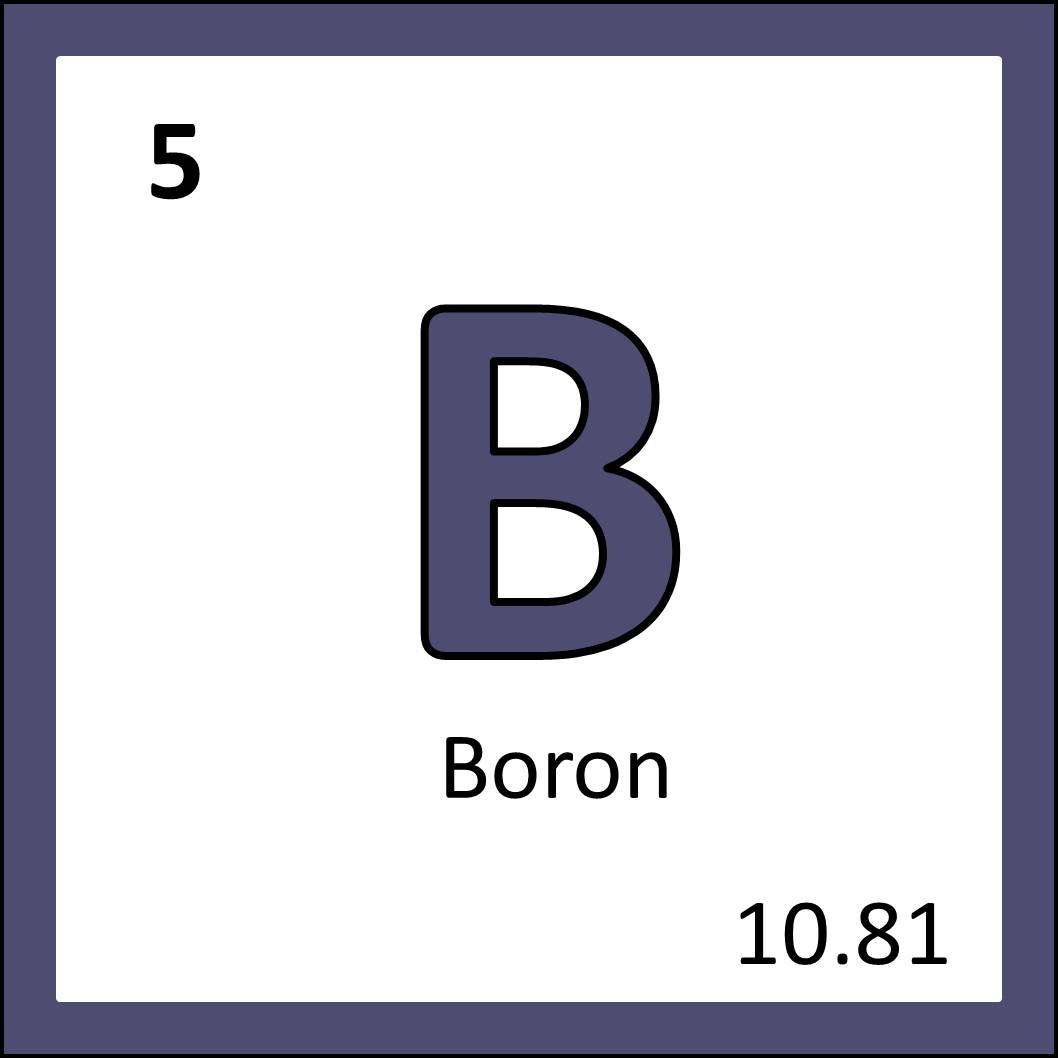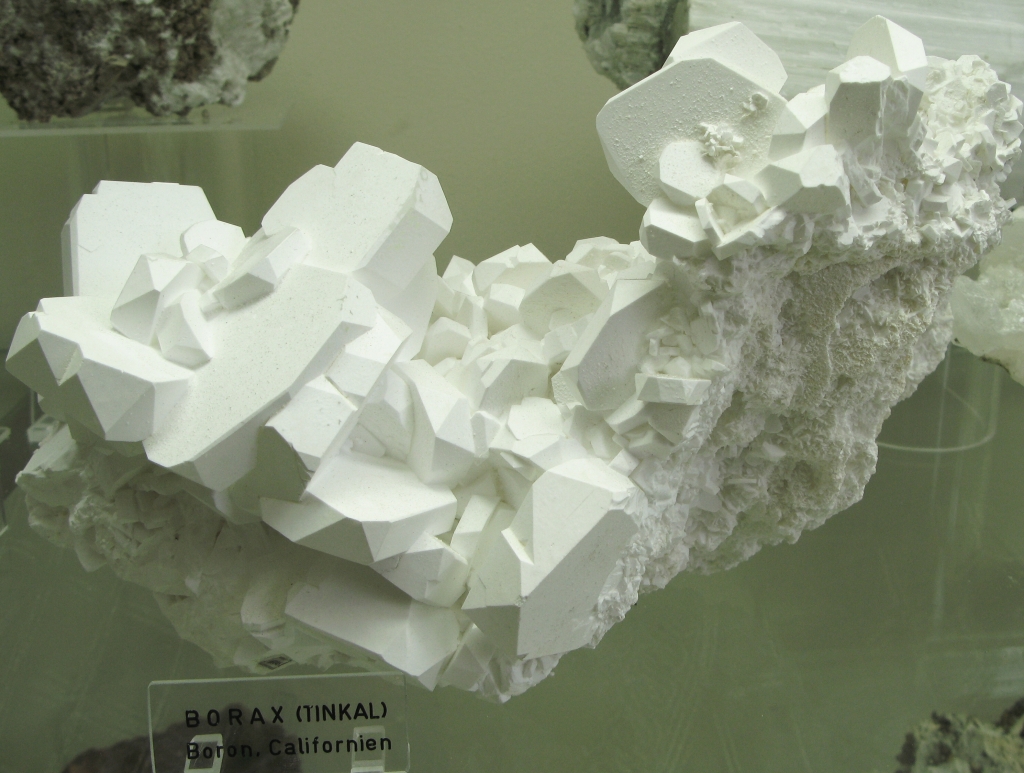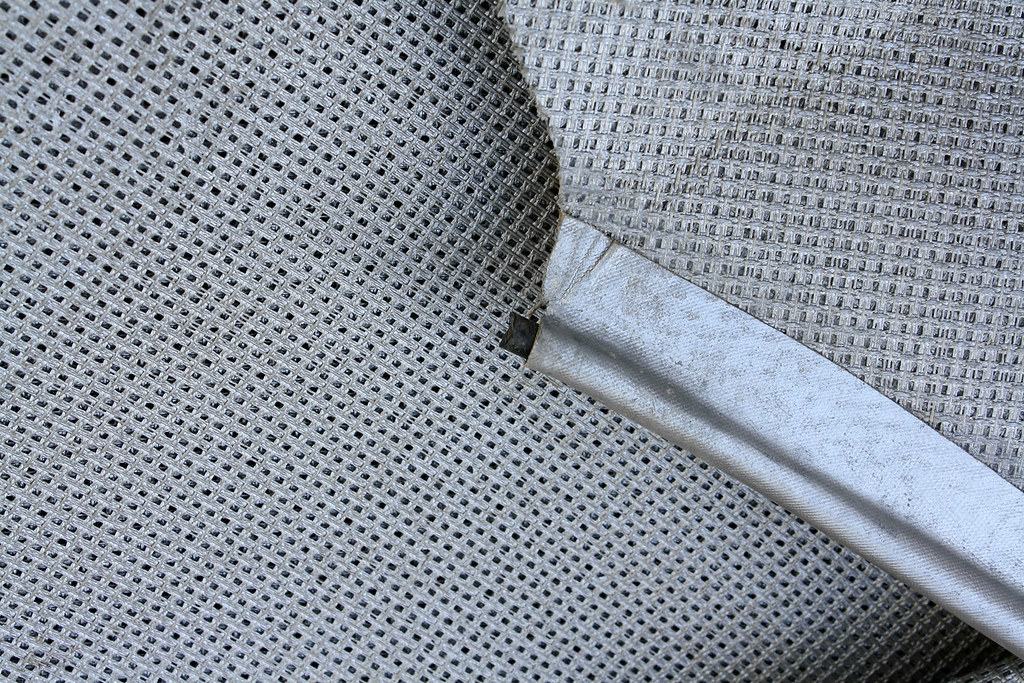


Clockwise from left: a nice lump of boron (from Wikimedia Commons), some Pyrex glassware made with borosilicate (from Wikimedia Commons), boron as it appears in the periodic table.
The strange thing about boron is that despite it having a low atomic number, it is a particularly rare element to find on Earth. The only way that boron as a free element is found on Earth is as a result of meteoroid arrivals, with other Earthly boron existing in minerals such as kernite and borax. It is this latter mineral that gave boron its name.

Borax has been used since the 1st century in China as an enamel glaze. Over the subsequent millennia the mineral was brought to the west, where it was used in metallurgy to purify the metals being processed, and even for medical purposes, earning it the name sal sedativum (sedative salt). The 19th century brought the identification of boron as an element in itself, with electrolytic pal Humphry Davy managing to isolate it from borate minerals to produce a brown substance on the electrode.
So what can we do with boron? Well in addition to its metallurgy and glaze uses, boron can add strength and heat resistance to glass, in what is known as borosilicate glass. This tough glass has a really low thermal expansion coefficient, which means it does not change size and shape drastically upon temperature changes. This allows borosilicate glass to be used in contexts where changing temperatures is common without the glass shattering under the tension, such as in the lab and in cooking (think Pyrex).
Free boron can use its high strength and lightness for use in (yes again) spacecraft, but also in golf clubs and fishing rods. Boron can also be used in fibreglass to increase its strength and to decrease the melting temperature to make it easier to manipulate, as silica’s melting temperature can be awkwardly high.

Finally, boric acid (H3BO3) has a similar toxicity to people as table salt. However it is much more toxic to insects as it poisons the stomach and is abrasive to their exoskeletons. Therefore boric acid is often used in insecticides, particularly against fleas and cockroaches.

And that’s boron: a rare, pest-controlling strong little element!

One thought on “Day 44: Boron”